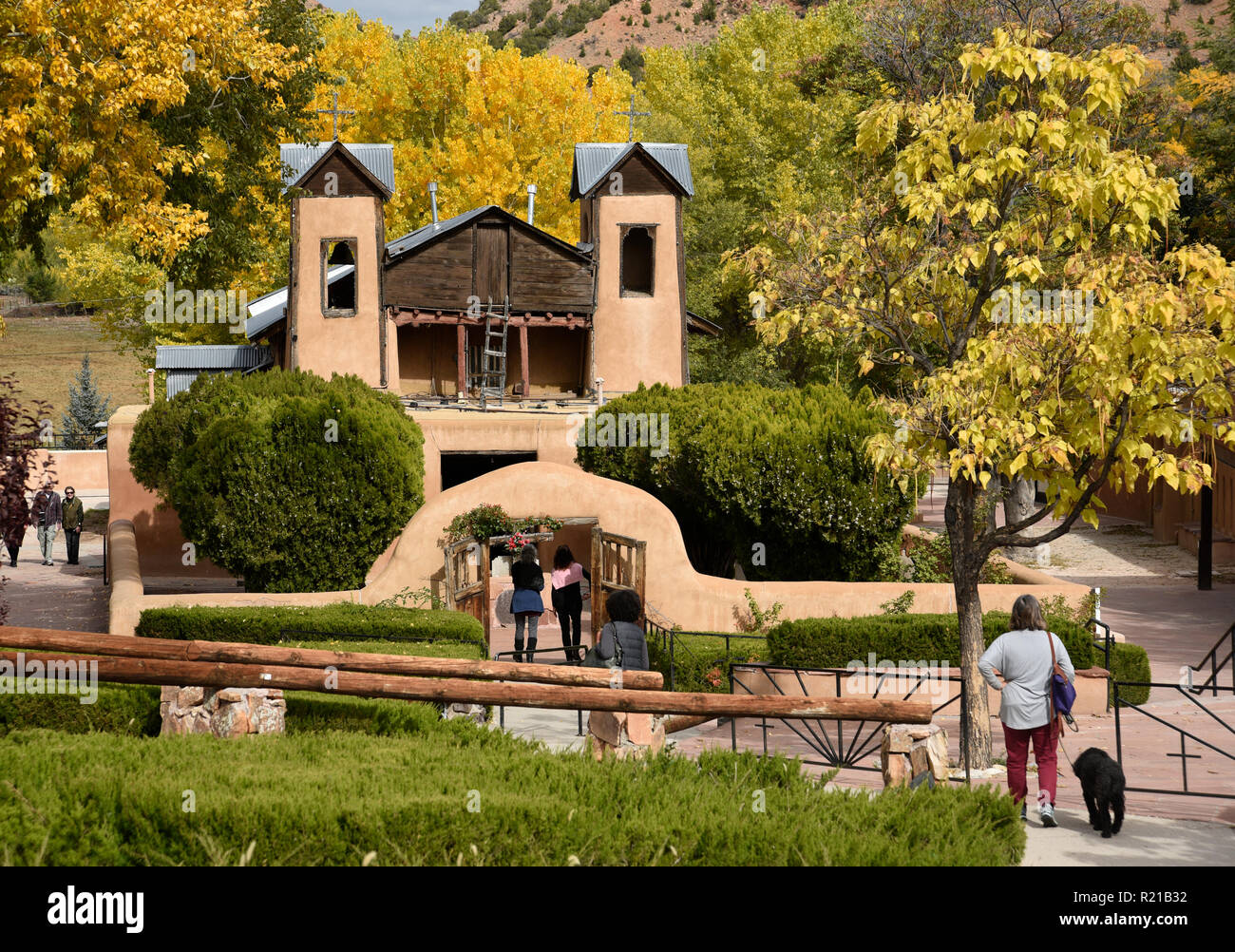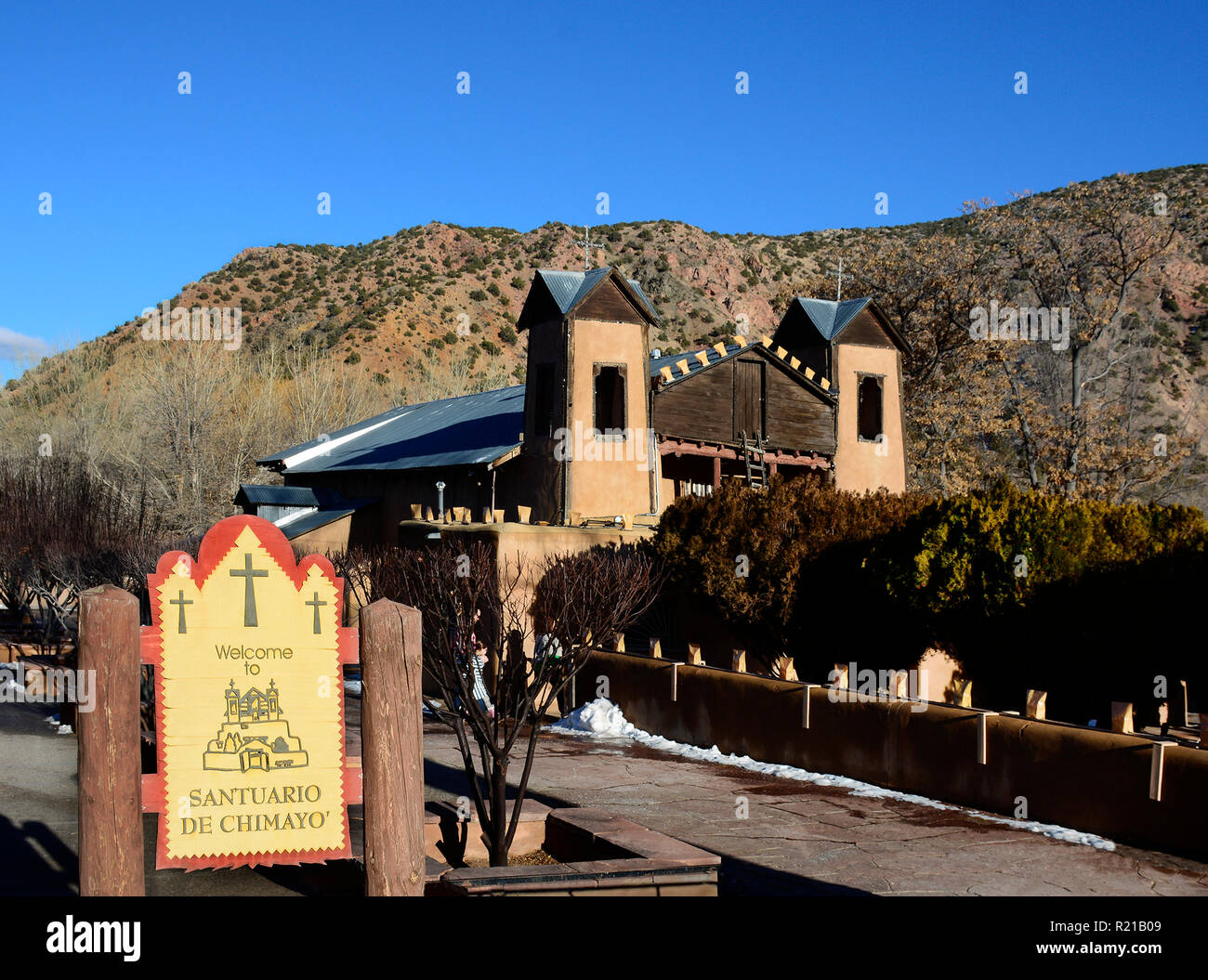
Chimayo: Where Faith, Fiber, and Fire Forge the Soul of New Mexico
The air in Chimayo carries a whisper, a scent of piñon smoke and sun-baked earth, a resonance that speaks of centuries. Tucked away in the Sangre de Cristo foothills of Northern New Mexico, this unassuming village of adobe and juniper is far more than just a dot on a map. It is a living tapestry woven from deep faith, enduring artistry, and a fiery culinary heritage – a place where the past isn’t merely remembered, but actively lived, breathed, and honored with every sunrise. To step into Chimayo is to step into a timeless landscape, a spiritual nexus that has drawn pilgrims, artists, and seekers for generations.
At its very heart lies El Santuario de Chimayó, a National Historic Landmark often referred to as the "Lourdes of America." This humble adobe chapel, with its twin bell towers and a history stretching back to the early 19th century, is the primary magnet for the hundreds of thousands who visit annually. Its fame rests on a single, powerful belief: the miraculous healing properties of the "tierra bendita," or holy dirt, found in a small pit within the chapel.
The legend of the Santuario’s origin is as captivating as the faith it inspires. It is said that in the early 1800s, a friar or a local named Bernardo Abeyta discovered a crucifix miraculously emerging from the earth. Each time it was taken to a nearby church, it would mysteriously return to its original spot in Chimayo. This was interpreted as a divine sign, leading to the construction of the chapel on that very site. Today, pilgrims line up patiently to enter a small room off the main altar, where a hole in the floor reveals the sacred earth. Many take a pinch, some apply it to ailments, others simply carry it as a symbol of hope.

"It’s not about a guaranteed cure," explains Maria Elena, a woman who travels from Albuquerque every Holy Week, her voice soft with reverence. "It’s about the faith, the intention. You come here, you put your worries down, and you leave with a sense of peace, a renewed spirit. That’s the real miracle." Indeed, the walls of the small room are adorned with discarded crutches, braces, and notes of gratitude – silent testaments to prayers answered, or at least burdens lightened. During Semana Santa (Holy Week), tens of thousands undertake pilgrimages, many walking for days from distant towns, their journey a profound act of devotion. The Santuario is not merely a building; it is a repository of hope, a testament to the enduring human need for spiritual solace.
Beyond its spiritual core, Chimayo is a crucible of artistic tradition, particularly renowned for its weaving. The art form was introduced to New Mexico by the Spanish in the 17th century, who brought Churro sheep – prized for their long, durable wool – and the techniques of the loom. Over centuries, these skills were passed down through generations, evolving into a distinct style characterized by bold geometric patterns, vibrant natural dyes, and a unique, rugged beauty.
The names Ortega and Trujillo are synonymous with Chimayo weaving. The Ortega family, with roots tracing back eight generations to colonial weavers, operates one of the oldest and most respected weaving shops in the state. Their looms, some ancient and some modern, hum with the rhythmic clack of shuttle and warp, transforming raw wool into exquisite rugs, blankets, coats, and vests. Each piece is a labor of love, a connection to the past, and a testament to unwavering dedication.
"Every thread tells a story," says Chimayo weaver, Jake Ortega, his hands moving deftly across the loom. "It’s the story of our family, our land, our culture. When someone takes home a Chimayo weaving, they’re not just buying a blanket; they’re buying a piece of history, a piece of our soul." The process is meticulous, from shearing the Churro sheep and carding the wool, to spinning, dyeing (often with natural pigments derived from cochineal, indigo, and local plants), and finally, the intricate act of weaving. Designs like the classic Chimayo stripe, the Vallero star, and various diamond motifs are instantly recognizable, embodying the spirit of the Southwest. These aren’t mere decorative items; they are functional art, designed to last for generations, much like the traditions they represent.
And then there’s the chile. For many, Chimayo isn’t complete without a taste of its legendary red chile, a landrace variety that boasts a flavor profile unlike any other. Grown in the nutrient-rich soil of the high desert valley, irrigated by ancient acequias (communal irrigation ditches), Chimayo chile offers a complex balance of heat, earthiness, and a subtle sweetness that is deeply ingrained in the local cuisine and identity.
"It’s not just hot; it’s flavorful," insists Sofia Garcia, a local farmer who has grown the prized chile for decades. "You can taste the sun, the soil, the history in every bite. It’s the soul of our food here." Efforts have been made to protect the genetic purity of the Chimayo chile, ensuring that this treasured heirloom variety isn’t diluted by commercial hybrids. Its distinctiveness has led to its recognition and a passionate following among chefs and food enthusiasts across the globe. From the robust red chile sauce smothering a traditional enchilada to the vibrant green chile stew, the essence of Chimayo’s culinary heart is undeniably tied to this fiery fruit of the earth.
Beyond these three pillars – faith, fiber, and fire – Chimayo offers a broader glimpse into the soul of Northern New Mexico. The pace of life here is slower, dictated by the seasons and the rhythm of tradition. Adobe homes blend seamlessly into the landscape, their soft lines echoing the surrounding hills. The vibrant blue doors and window frames, a common sight throughout the region, are said to ward off evil spirits, adding another layer of folk belief to the everyday.
Art galleries showcasing local painters, sculptors, and potters dot the main road, though less famed than the weavers, they contribute to the village’s vibrant artistic spirit. Small family-run businesses, often passed down through generations, uphold a sense of community and continuity. The air, crisp and clean, often carries the distant bray of a donkey or the murmur of Spanish conversation, a constant reminder of the area’s deep Hispanic roots.

The landscape itself is a character in Chimayo’s story. The rugged beauty of the Sangre de Cristo Mountains, often capped with snow well into spring, provides a dramatic backdrop. The high desert flora – chamisa, sagebrush, and prickly pear cactus – thrives in the arid climate, giving way to lush green fields where the acequias bring life-giving water to the crops. This interplay of harshness and fertility, of ancient traditions and quiet resilience, defines the spirit of Chimayo.
What makes Chimayo so enduringly captivating? It is perhaps its unwavering authenticity. In a world increasingly homogenized and fast-paced, Chimayo offers a sanctuary of genuine experience. It doesn’t put on airs; it simply is. It is a place where faith is a palpable force, where art is an inherited language, and where food is a profound expression of identity.
To leave Chimayo is to carry a piece of its quiet magic with you. It’s the memory of the hushed reverence within the Santuario, the tactile warmth of a hand-woven rug, the lingering heat of a perfectly crafted red chile. It’s a reminder that some places transcend mere geography, becoming instead a destination for the soul, a profound testament to the power of tradition, community, and the enduring spirit of the Land of Enchantment. Chimayo isn’t just a village; it’s a pilgrimage, an heirloom, and a taste of the truly timeless.


